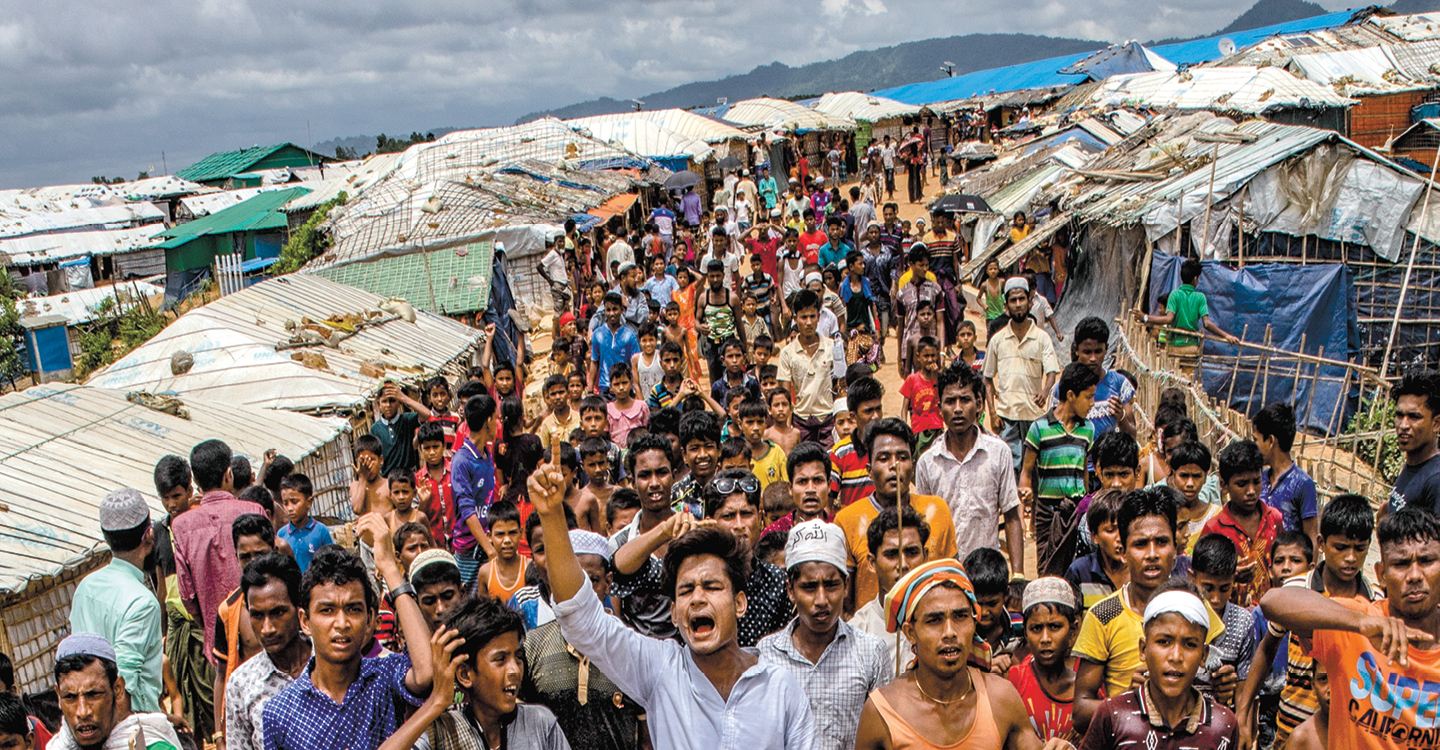The village in western Myanmar where Zahidullah Rahim lived until last year is gone. The road is now lined with charred palm trees and the burnt remains of mosques. Tropical vines grow over what is left of the scorched foundations where homes once stood.
Rahim, a member of the oppressed Rohingya minority, once hoped to become a lawyer and represent his people. Now he lives in a refugee camp in neighboring Bangladesh.
“Everything has disappeared,” Rahim says, “even my dreams.”
Rahim is one of more than 700,000 Rohingya who fled Myanmar in 2017 amid a frenzy of killing, rape, and arson by soldiers and Buddhist mobs. More than a year later, no one has been held accountable for the violence.
The village in western Myanmar where Zahidullah Rahim lived until last year is gone. The road is now lined with charred palm trees and the burnt remains of mosques. Tropical vines grow over what is left of the burnt foundations where homes once stood.
Rahim is a member of the oppressed Rohingya minority. He once hoped to become a lawyer and represent his people. Now he lives in a refugee camp in neighboring Bangladesh.
“Everything has disappeared,” Rahim says, “even my dreams.”
Rahim is one of more than 700,000 Rohingya who fled Myanmar in 2017. They left amid a frenzy of killing, rape, and arson by soldiers and Buddhist mobs. More than a year later, no one has been held accountable for the violence.

